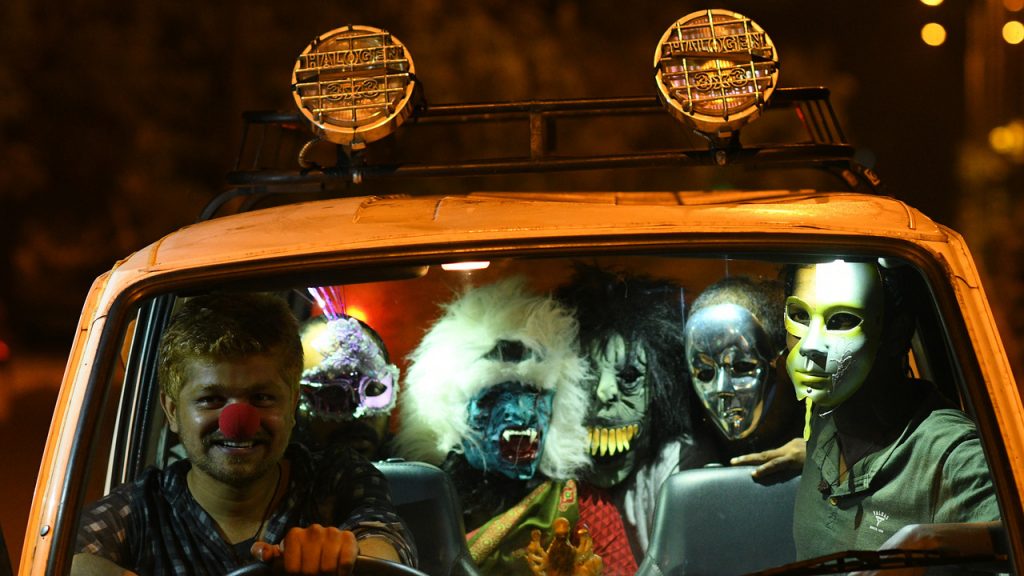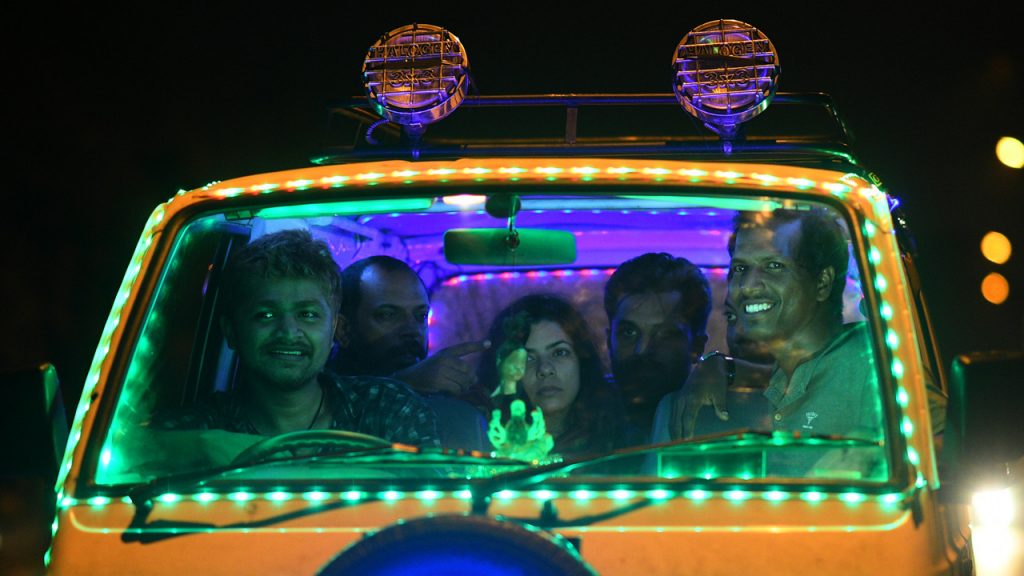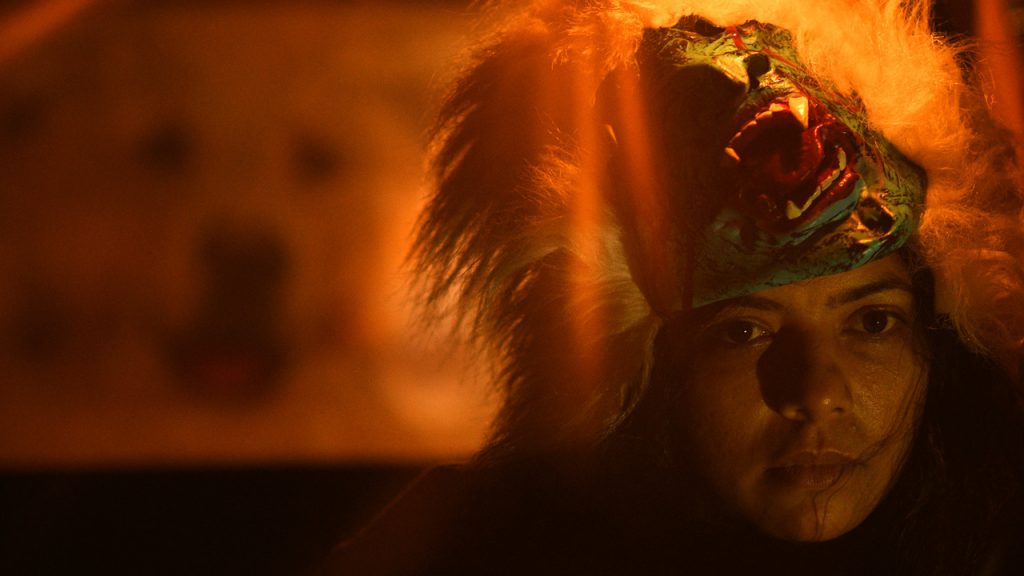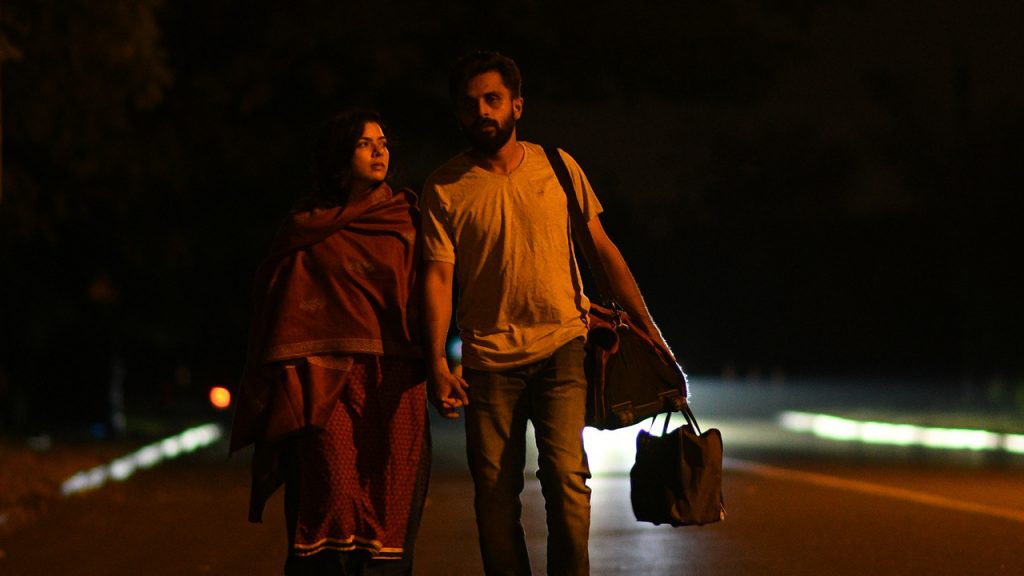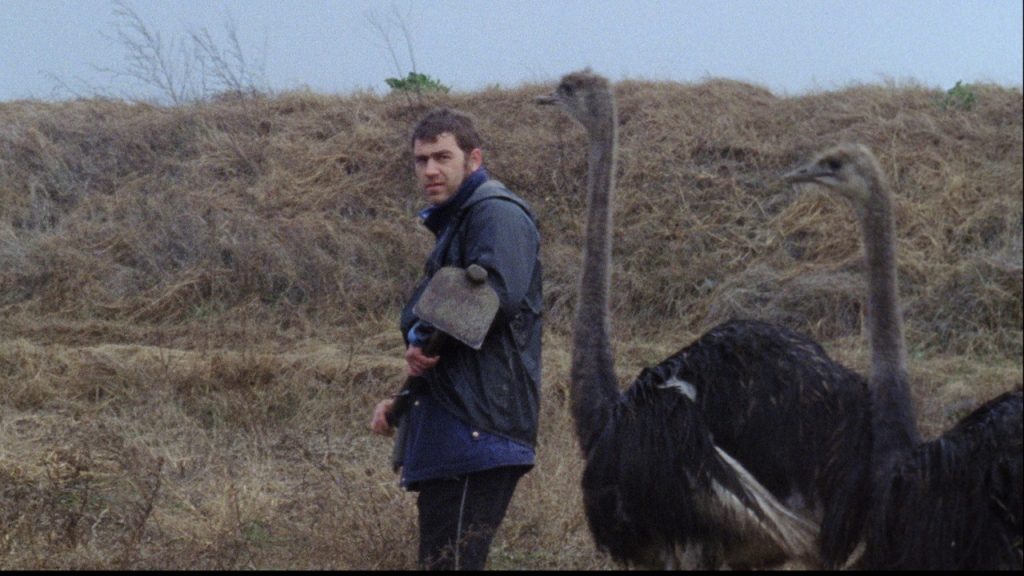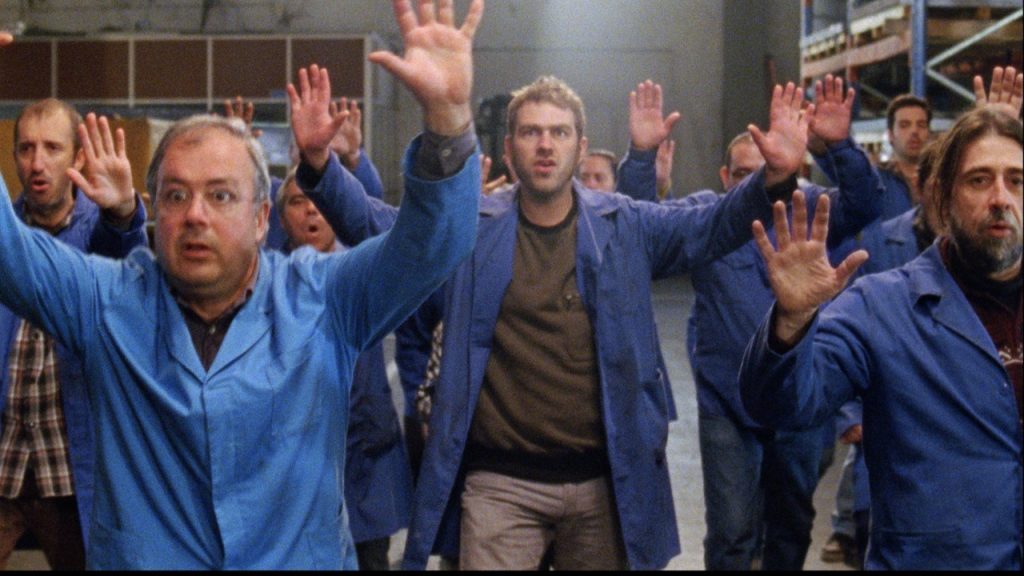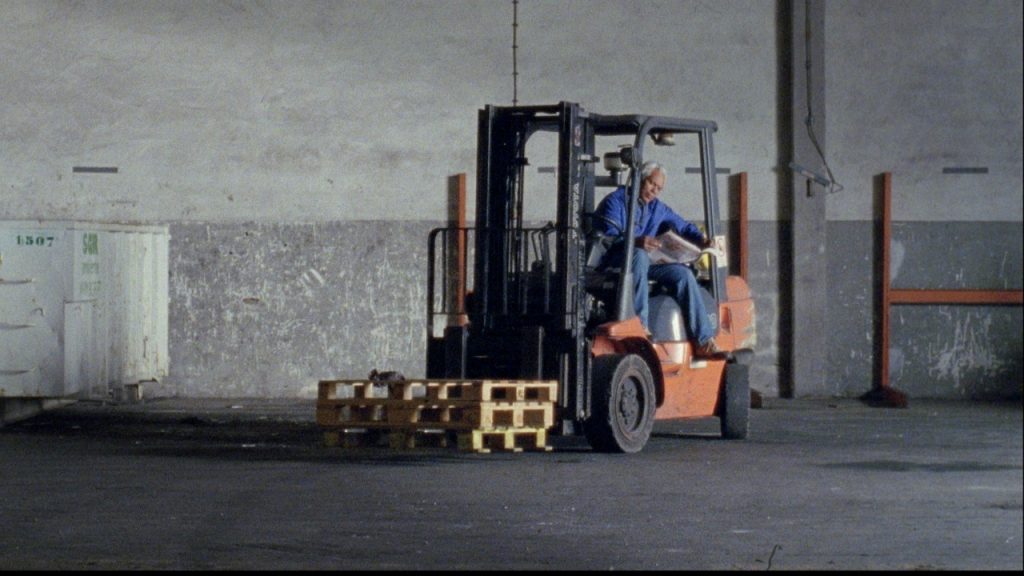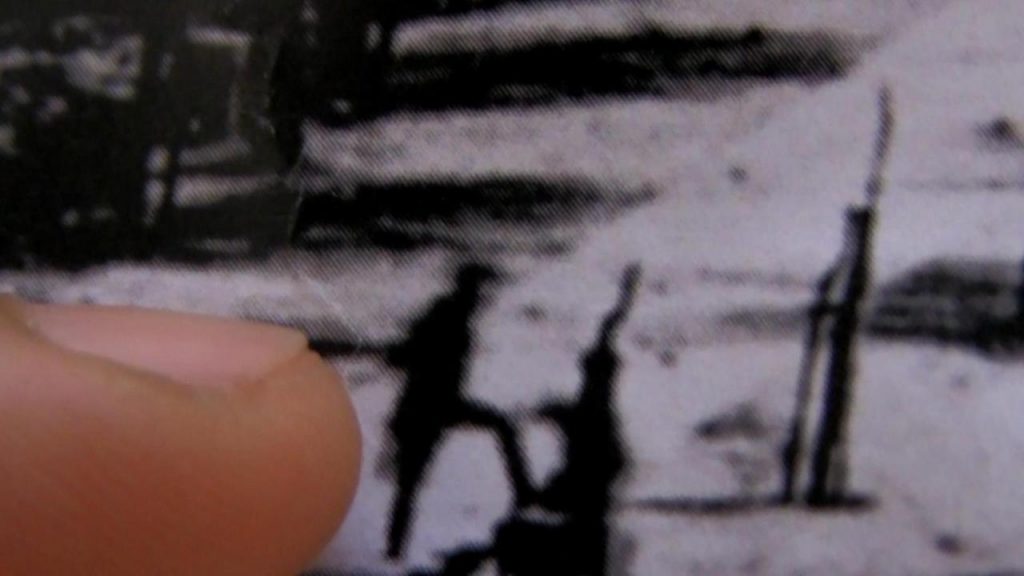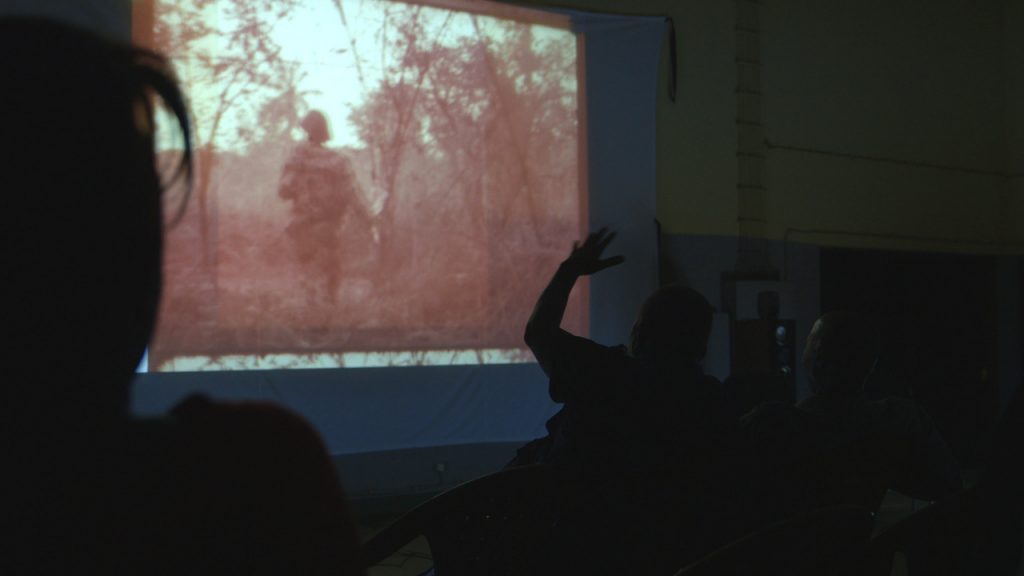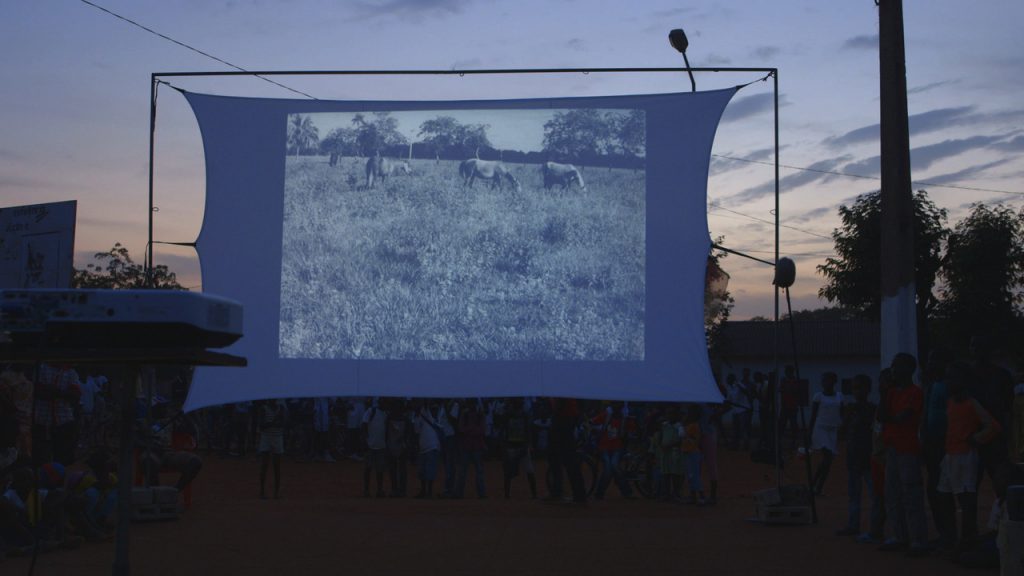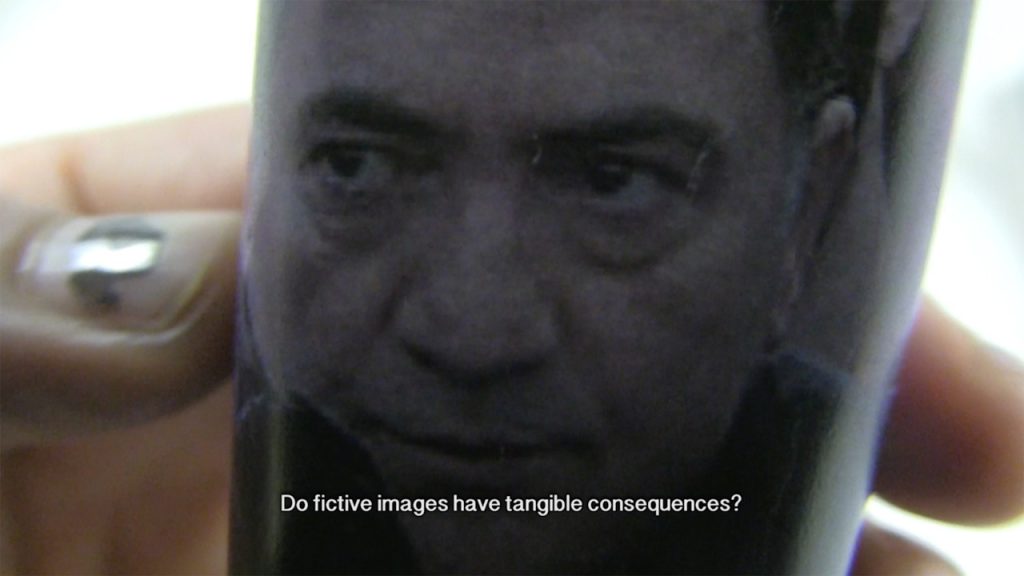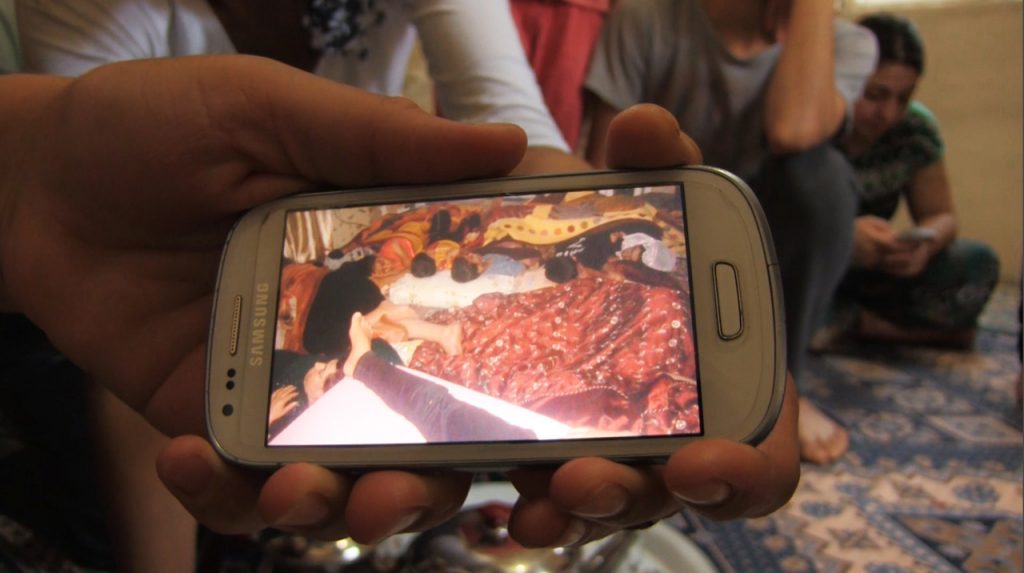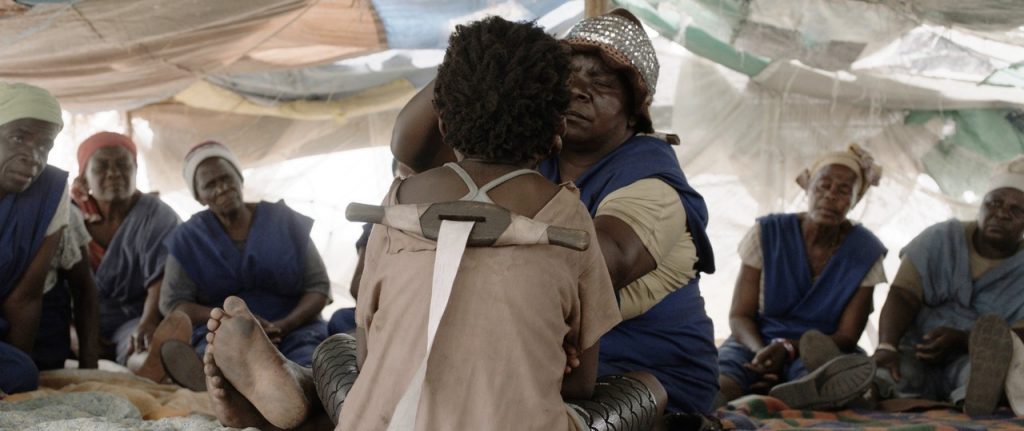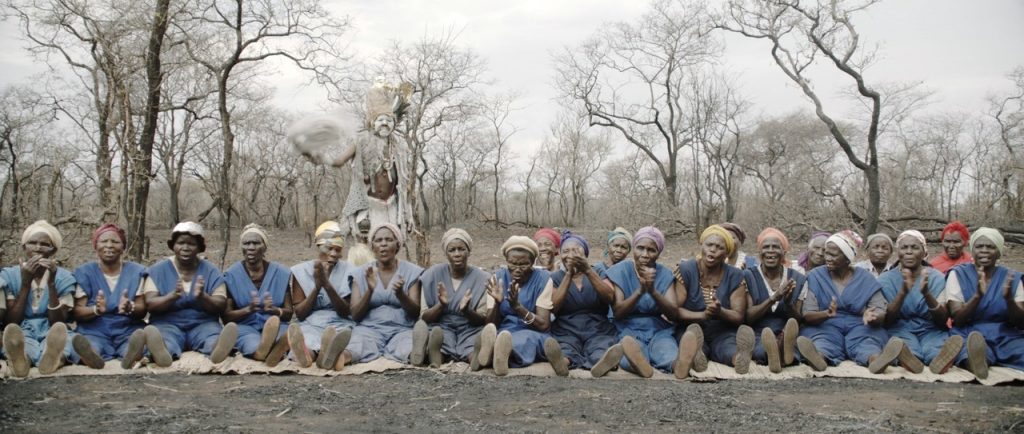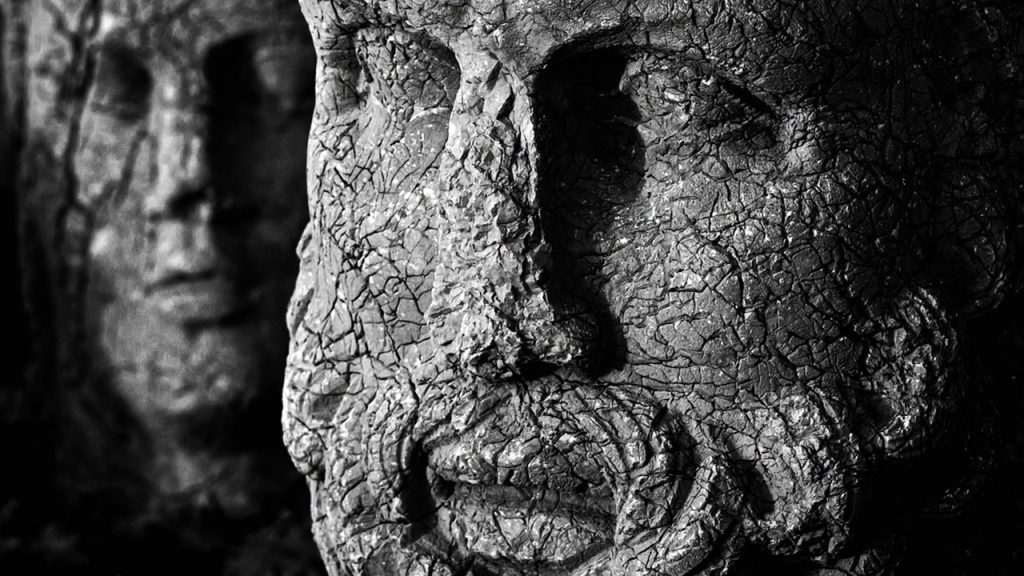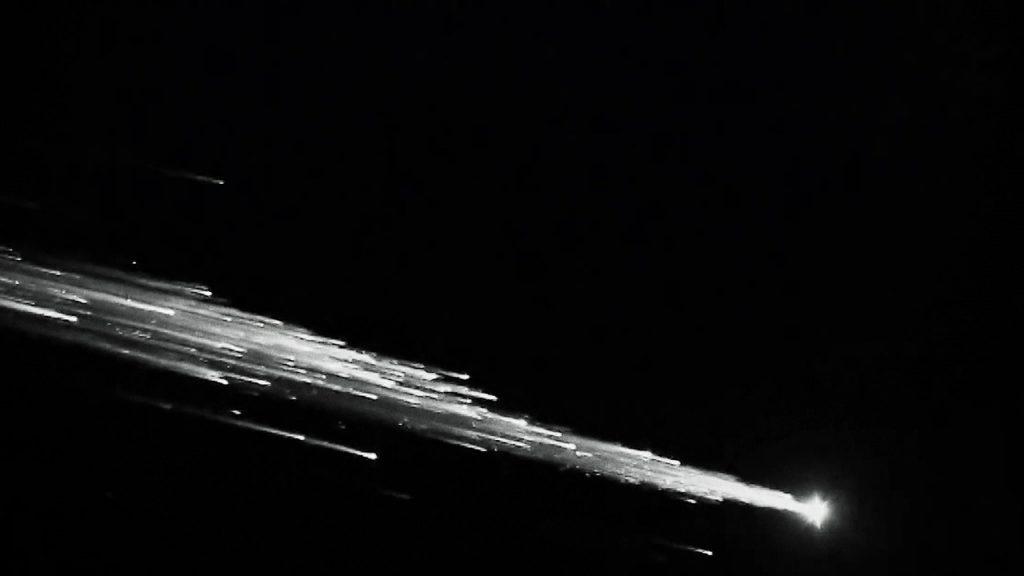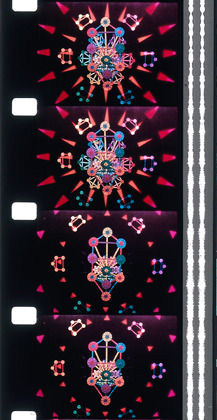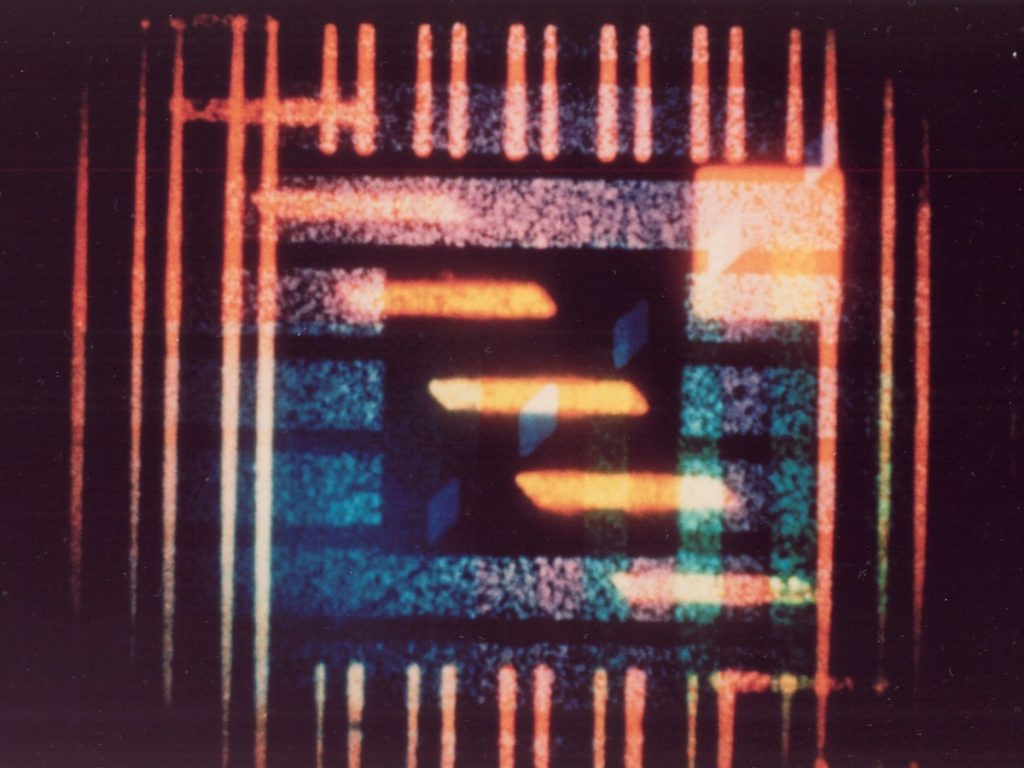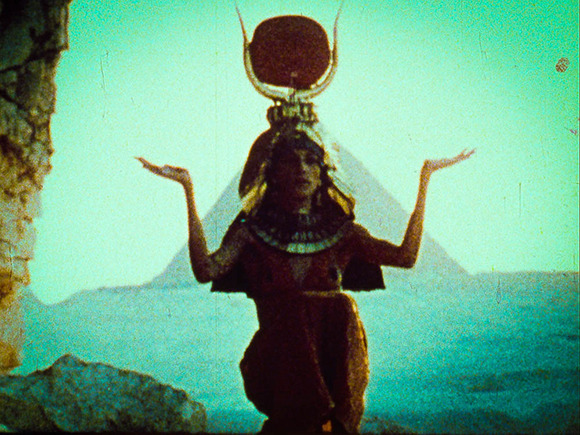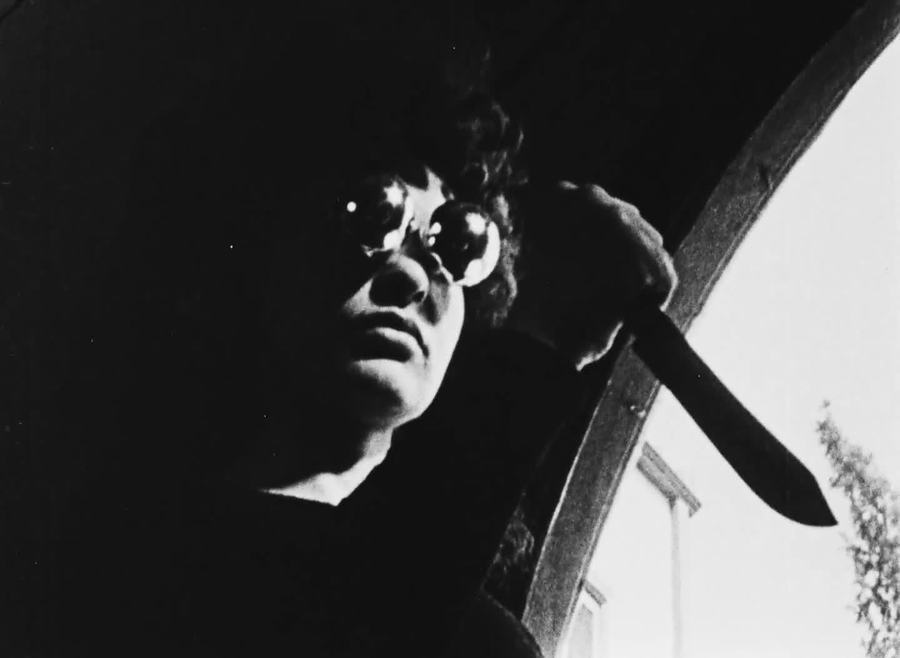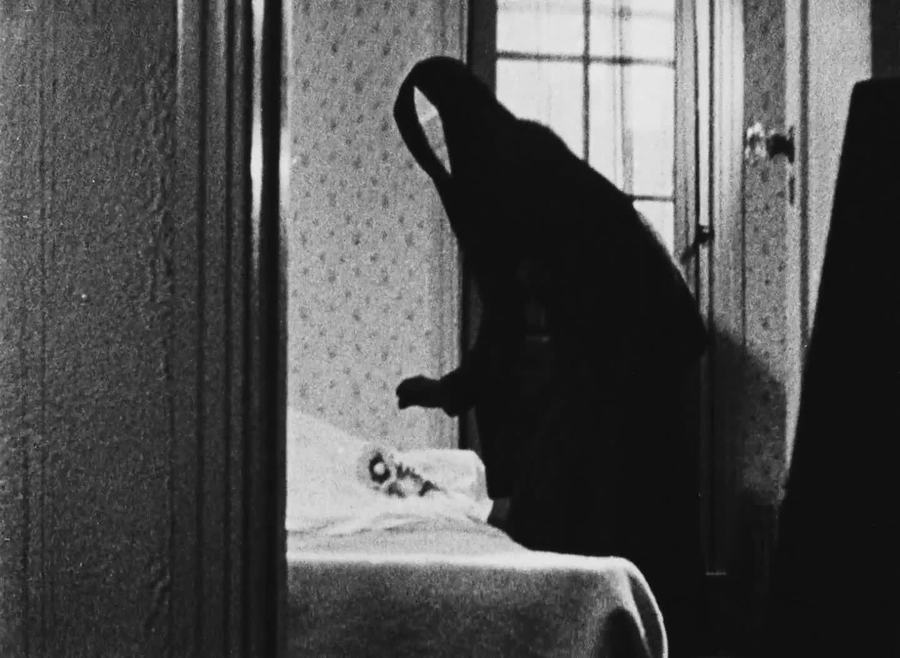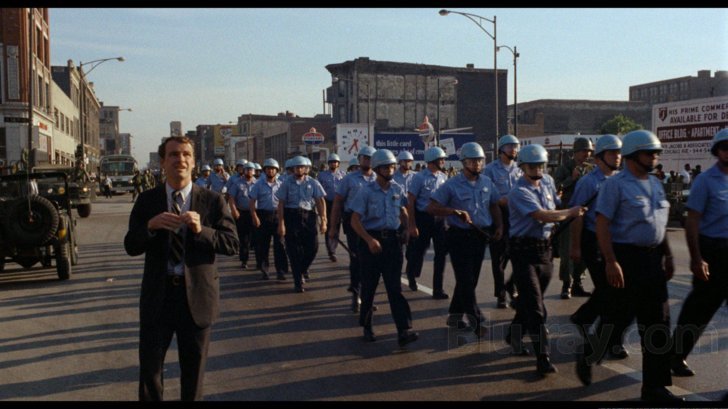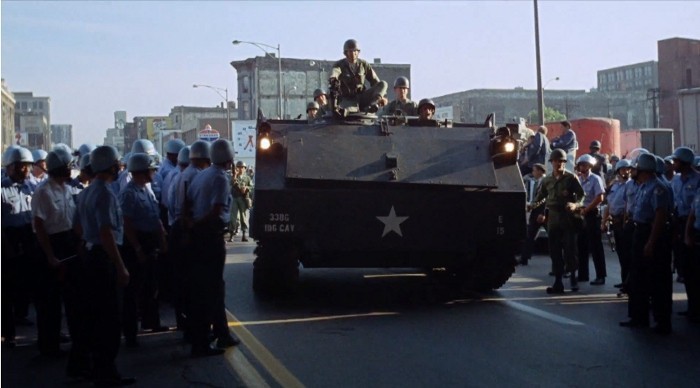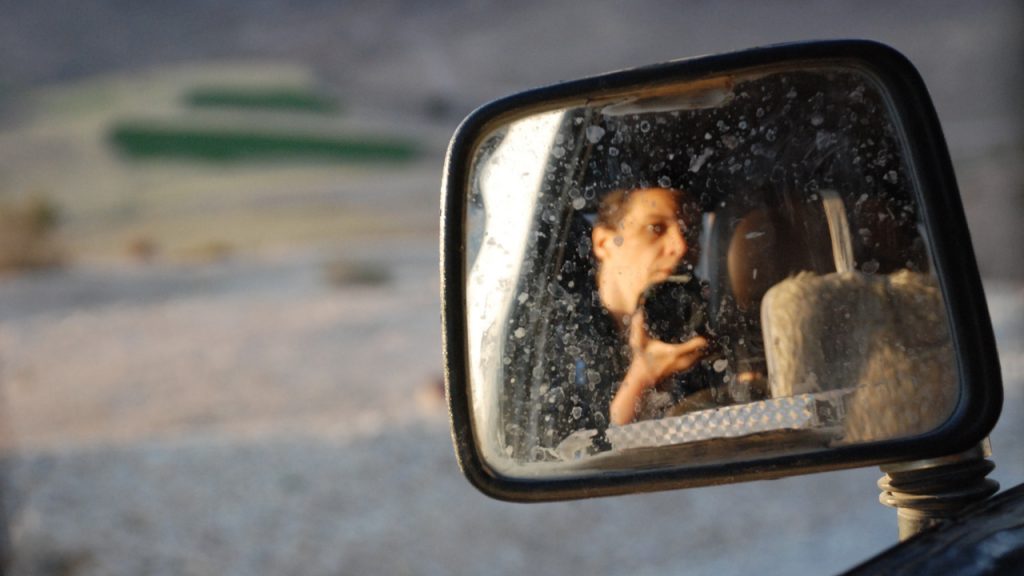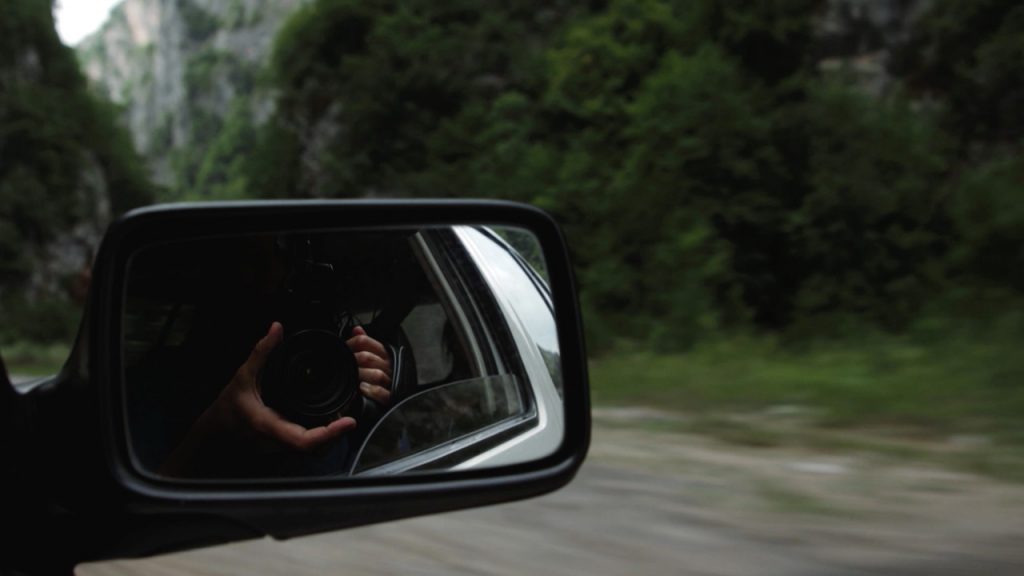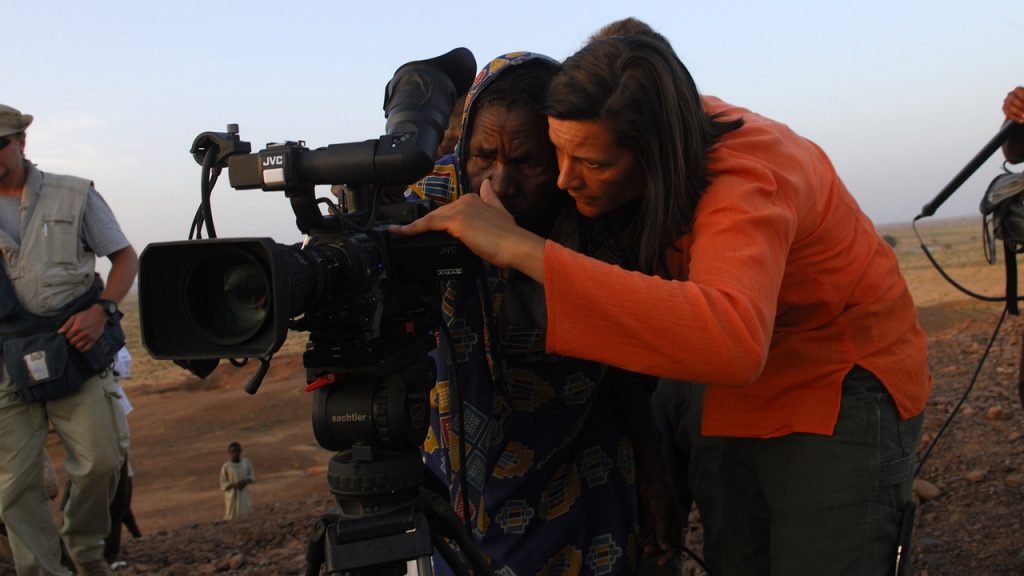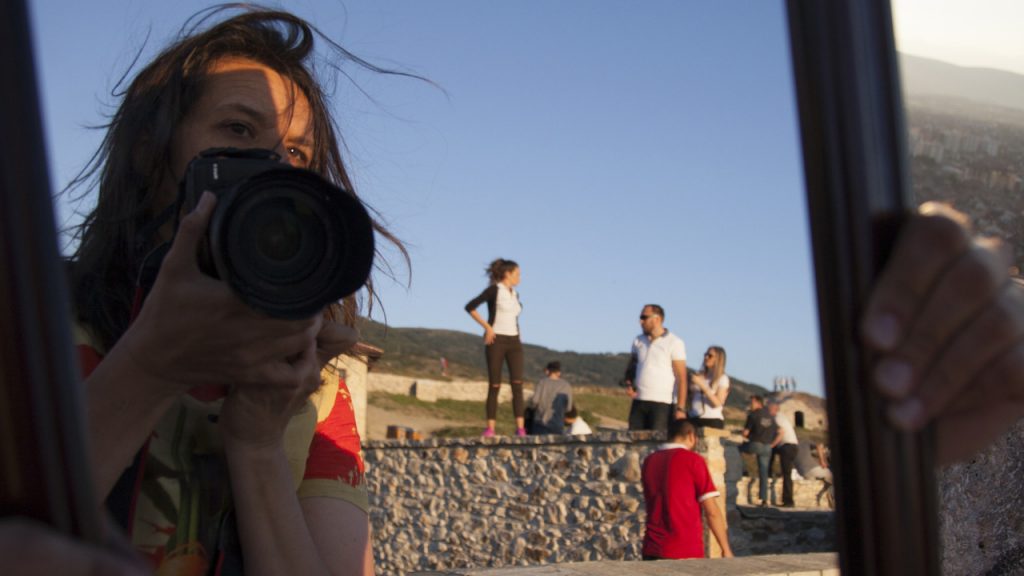Oh, the end is drawing near! Today is the last day of this year’s GEGENkino festival and we hope you had some inspiring, insightful and/or intense moments. Thank you all! We’ll close off the festival with two feature films and one short film as part of our programme section “HOW TO RESIST…”: At 6pm at Schaubühne Lindenfels, we’ll screen Sanal Kumar Sasidharan hitchhike/road trip/odyssey film SEXY DURGA, in which “Sasidharan reflects Indian independent cinema’s emerging feminist moment”as some commentators have it. There’ll be an opening film to SEXY DURGA that is JODILERKS DELA CRUZ / EMPLOYEE OF THE MONTH by Carlo Francisco Manatad, one of the most interesting young directors from the Philippines, whose film scene seems to really flourish right now. At 8pm then, finishing off our festival, there’ll be a screening of the Portuguese proletarian strike film THE NOTHING FACTORY by Pedro Pinho – another film that, in portraying a group of factory workers’ struggle for the protection of their job and existence, blends fiction film and documentary in very unique way. (Shot on one of our favourite materials: 16mm!) We hope to see you all again today!
Sun 15 April 2018 @ Schaubühne Lindenfels
6 PM SEXY DURGA (IN 2017, D: Sanal Kumar Sasidharan 85’ OV w/ English subtitles) + opening film: JODILERKS DELA CRUZ / EMPLOYEE OF THE MONTH (PHL/SGP 2017, D: Carlo Francisco Manatad 13’)
8 PM THE NOTHING FACTORY (PT 2017, D: Pedro Pinho 177’ OV w/ English subtitles)
| Sun 15 April 2018 Schaubühne Lindenfels | HOW TO RESIST… |
| 6 PM | SEXY DURGA (IN 2017 D: Sanal Kumar Sasidharan 85’ OV w/ English subtitles) + opening film: JODILERKS DELA CRUZ / EMPLOYEE OF THE MONTH (PHL/SGP 2017 D: Carlo Francisco Manatad 13’1 |
| 8 PM | THE NOTHING FACTORY (PT 2017, D: Pedro Pinho 177’ OV w/ English subtitles) |
SEXY DURGA
IN 2017, D: Sanal Kumar Sasidharan, A: Rajshree Deshpandey, Kannan Nair, Vishnu Vedh, OV with English subtitles, 85’, DCP
At the beginning: white text on black ground. An episode from the epic
poem Ramayana tells the mutilation of the Shurpanakha by Rama’s
half-brother Lakshmana. The black fades out and merges into the feast of
Garudan Thookam in south Indian Kerala, where the bloodthirst of Kali,
an embodiment of the deity Durga, is to be ritually quenched. Bodies are
going into ecstasy, hooks into human skin, masculinity is performed,
mobile phones are filming. Thenchange: a road at night. The young couple
Durga and Kabeer want to get away. She’s a Hindu from the north, he’s a
Muslim from the south. A minibus stops, they get in. SEXY DURGA lets
one experience the attitude and atmosphere out of which sexual violence
could arise in public spaces. Moreover, the attribution of the film’s
title is an affront to religious hardliners. Durga, which is not
associated with a male god, is deeply worshipped in Hinduism. The
eroticised association is provocative, and a figure of that name, which
exposes the mechanisms of patriarchal oppression in a constricting way,
has been the reason for banning the film until recently. Sanal Kumar
Sasidharan deconstructs myths and social dynamics and at it, skillfully
works with expectations and anxieties. The camera is unleashed and free
throughout the film, its two protagonists are trying to follow suit.
Opening Film
JODILERKS DE LA CRUZ
PHL/SGP 2017, D: Carlo Francisco Manatad, A: Angeli Bayani, Ross Pesigan
OV with English subtitles, 13’, DCP
JODILERKS DELA CRUZ (EMPLOYEE OF THE MONTH) depicts an evening at a gas station. The last one of an employee who used to be motivated once. Now, there is only the endless and noisy traffi c, from which hardly anyone ever stops. With her arbitrary actions, the protagonist mirrors the society around her. An amusing, wicked potshot of a film.
15 April, 6 pm – Schaubühne Lindenfels – € 6,5 (5,5 red.)
THE NOTHING FACTORY
PT 2017, D: Pedro Pinho, A: José Smith Vargas, Carlo Galvão, Njamy Sebastião, 177’, OV with English subtitles, DCP
In the middle of the night, machine parts are stolen from an elevator factory. Immediately, the workers realize that the administration has planned this act of sabotage in order to elegantly disappear into the void of financial crisis while merely paying miserable severances at the most. Since a strike, especially if there is no work left, would remain ineffective, the workers turn their protest into an occupation, into a struggle for their right to work. At this point, THE NOTHING FACTORY begins its operation. On grainy 16mm material, Pinho stages bleak rooms as still lives. Framed within these, the workers persevere, play football and chess, and of course discuss empowerment and security issues inside of capitalist employment conditions. Gradually, the group thins out: some of them accept the dismal pay-offs offered in uncomfortable one-on-one conversations. Eventually, the bordeom of the hard core ends up in the performance of a peculiar musical choreography. Due to his reflection on Portugal’s socio-political reality, the film is inevitably reminiscent of classical 1970s strike films such as Petri’s THE WORKING CLASS GOES TO HEAVEN or Fassbinder’s miniseries EIGHT HOURS ARE NOT A DAY, yet it does not ever lose its sense of humor. The film’s self-referentiality, its even documentary context constitute its remarkable stance: nearly the entire cast actually does work in factories, a quirky filmmaker follows the action and there really has been a collectively managed elevator factory.
15. April, 18 Uhr – Schaubühne Lindenfels – € 6,5 (5,5 erm.)
Thank you all very much for the unique evening yesterday! Thanks to Raster, IfZ, Pedro Maia, Robert Lippok, Grischa Lichtenberger, Mieko Suzuki, everyone we forgot and to all of you!
Now it’s only two more days of GEGENkino for this year—both of which will be under the question that we concerned ourselves quite a lot with is curating this year’s program: how to resist (on screen)? What is politically involved filmmaking, film activism, what are cinematic forms of resistance …? Today and tomorrow at Schaubühne Lindenfels we want to introduce new and interesting positions in regard to those questions to you.
Starting off today at 6pm with a panel discussion that we put under the headline “The Streets Are Not Enough – How To Resist On Screen“. Artists/activists Angelika Nguyen, Julia Lazarus and Filipa César will be on stage joined by Claus Löser who’ll do the moderation. Read more about the panel and the people on the panel below or in our programme booklet: http://2018.gegenkino.de
Afterwards, we’ll have a double screening of tho filmmakers, whose work and whose form of political film/video art we found very salient.
At 8pm, Filipa César will present her most recent feature-length film SPELL REEL—a cinematic essay about the importance of film archives in retracing the history of colonialism (in this particular case , the history of the liberation war in Guinea-Bissau). There’ll be a Q&A with Filip César after the screening.
At 10pm, we’ll show a selection of works by Turkish video artisst belit sağ. Her questioning of the image and the tracing-down of the ideology that flows in every picture puts her work in kinship with those of Hito Steyerl and Harun Farocki for example.
| Sat 14 April 2018 Schaubühne Lindenfels | HOW TO RESIST… |
| 6 PM | The Streets Are Not Enough – How To Resist On Screen TALK w/ Angelika Nguyen, Julia Lazarus, Filipa César & Dr. Claus Löser |
| 8 PM | SPELL REEL (D/PT/F/GNB 2017) D: Filipa César 96’ OV w/ English subtitles |
| 10 PM | belit sağ – Störfeuer im Bedeutungsraum SHORT FILM REEL (NL/TR 2014-2017) Σ 60’ OV w/ English subtitles |
Podium mit Filipa César, Julia Lazarus, Angelika Nguyen & Claus Löser
THE STREETS ARE NOT ENOUGH! HOW TO RESIST ON SCREEN
Um darüber sprechen zu können, an welchen Orten und auf welche Weisen wir mit filmkünstlerischen Positionen Hierarchien aufbrechen und Ungerechtigkeiten entgegentreten, muss der diesjährige Podiumstitel The Streets Are Not Enough! How To Resist On Screen zusätzlich umgekehrt werden. Denn einzig Straßen und Räume sind für die Artikulation von Protest nicht genug. Ebenso wenig funktionieren audiovisuelle Werke widerständigen Denkens losgelöst von bestimmten Orten der Rezeption oder deren gezielten Einbettung in öffentliche Diskurse. Es sollte also gleichermaßen gelten: Just Films Are Not Enough! Nicht zuletzt sind Filme selbst ebenfalls Orte der Imagination, Erfahrung und Auseinandersetzung, deren Herstellungsbedingungen, formale Ästhetiken und Intentionen maßgeblich mit Räumen und Strukturen zusammenhängen, die FilmemacherInnen beim Arbeiten vorfinden, die sie einfordern und im besten Fall auch mitgestalten. In filmischen Narrativen werden zentrale Themen gesellschaftlichen Zusammenlebens wie Rassismus, Identität, Ausgrenzung und Teilhabe konstruiert, verhandelt und in Beziehung gesetzt. Ist dabei die Zielsetzung nicht stets einen unausgesprochenen Scheinkonsens fortzubeten oder fundamentale Ungerechtigkeiten auszuklammern oder schönzureden, müssen die genannten Aspekte divers gedacht, unangenehm perspektiviert und widerständig in Szene gesetzt werden. Wir als Filmfestival stellen uns die Frage, wie eine Gesellschaft, ein Festival, Kollektiv oder Ausstellungsraum dazu beitragen kann, involvierende Kunst angemessen zu präsentieren und zu fördern? Welche Machtstrukturen begünstigen Verbote und Verfolgung? Welches Spannungsverhältnis besteht zwischen etablierten Produktions- und Distributionswegen und davon unabhängigen Formen? Was kann wo, wie erzählt, gezeigt, angegriffen werden? Wann wird ein Bild zum Gegenbild? Wie sehen Gegenbilder aus und: Gibt es so etwas überhaupt? Darüber unterhalten sich auf unserem Podium in der Schaubühne Lindenfels Angelika Nguyen (Filmwissenschaftlerin und Kritikerin), Julia Lazarus (Filmemacherin und Kuratorin) und Filipa César (Künstlerin und Filmemacherin) in einem ca. 90-minütigen Gespräch, moderiert von Claus Löser (Autor und Kurator). Gespräch in deutsch.
14. April, 18 Uhr – Schaubühne Lindenfels – Eintritt frei
Angelika Nguyen, Jahrgang 1961, studierte an der HFF in Potsdam- Babelsberg Filmwissenschaft, arbeitet als Filmjournalistin, Referentin und Aktivistin. Thematische Schwerpunkte: filmische Darstellung von Minderheiten, Ausgrenzung und Rassismus; Darstellung „wahrer Begebenheiten“ in filmischen Erzählungen; Film als politische Reflektion seiner Zeit; Widerstand gegen Mehrheitsgesellschaft im Film; Erzählstrategien in Dokumentar- und Spielfilm.
Julia Lazarus ist Künstlerin, Kuratorin und Filmemacherin und lebt und arbeitet in Berlin. Sie studierte an der Universität der Künste Berlin und am California Institute of the Arts in Los Angeles, USA. Ihre Filme sind im Vertrieb bei Sixpackfilm Wien und bei e-flux, Berlin/New York. Ausstellung und Screenings u.a.: Depo Istanbul, District Berlin, IG Bildende Kunst Wien, Galerie Funke Berlin, Schwules Museum Berlin, Manifesta Murcia, NGBK Berlin.
Filipa César, Künstlerin und Filmemacherin, lebt seit 2001 in Berlin. Ihre Filmische Arbeiten stellen performative Räume zur Verfügung, in die sich subjektives Wissen und Gegenerzählungen einschreiben können. 2011 initiierte Filipa César das Recherche-Projekt „Luta ca caba inda“ mit dem sie uunter anderem an „Living Archive“ und „Visionary Archive“ beim Arsenal – Institut für Film und Videokunst beteiligt war. César prämierte ihren ersten feature-length Dokumentarfilm SPELL REEL im Forum der Berlinale 2017. Screenings ihrer Filme u.a. in: Kurzfilmtage Oberhausen, International Film Festival Rotterdam, DocLisboa, Istanbul Biennial, Tate Modern London, São Paulo Biennale, Jeu de Paume Paris, mumok Vienna, MoMA New York, Sonic Acts Amsterdam.
In Anwesenheit von Filipa César.
SPELL REEL
D/PT/F/GNB 2017, DOK
R: Filipa César, OmeU, 96’, DCP
Die Anfangssequenz, Bild im Bild: Auf dem Kopf stehendes, deutlich in Mitleidenschaft gezogenes Filmmaterial eines Waldgebietes. Parallel erscheint ein Schriftzug, der die zu sehenden Menschen als UnabhängigkeitskämpferInnen enthüllt. Die analogen Aufnahmen werden vorübergehend von Digitalbildern ersetzt, diese verdrängen die analogen jedoch nie vollends – durch die phasische Überlagerung der verschiedenen Materialien wird sukzessive ein Nebeneinander arrangiert. Cesar verknüpft auf diese Weise Archivaufnahmen aus der Zeit des Befreiungskrieges in Guinea-Bissau (1963-74), gefilmt von Guerillakämpfern Sana na N’Hada und Flora Gomes, mit Aufzeichnungen jüngerer Geschichte. Changierend zwischen Vergangenheit und Gegenwart inszeniert die Regisseurin Narrative, die sich permanent im Prozess befindend. Initiiert durch das Projekt „Visionary Archives“ des Arsenal Berlin ist SPELL REEL ein Rechercheprojekt, dass durch Reinszenierung von kurz vor dem Verfall stehendem filmischen Material zumindest fragmentarisch einen Teil der Geschichte des guinea-bissauischen Unabhängigkeitskampfes dokumentiert.
belit sağ – Störfeuer im Bedeutungsraum
AND THE IMAGE GAZES BACK(NL/TR 2014, 10’, englische OV, DCP)
MY CAMERA SEEMS TO RECOGNIZE PEOPLE (NL/TR 2015, 3’, OmeU, DCP)
SEPT. – OCT. 2015, CIZRE (NL/TR 2015, 15’, OmeU, DCP)
AYHAN AND ME (TR 2016, 14’, OmeU, DCP)
IF YOU SAY IT FORTY TIMES… (NL 2017, 5’, OmeU DCP)
GRAIN (NL 2016, 5’, OmeU, DCP)
DISRUPTION (AKSAMA) (NL 2016, 5’, OV, DCP)
CUT-OUT (NL/USA 2018, 4’, OmeU, DCP)
Die Arbeiten von belit sağ sezieren die komplexen Zusammenhänge von Bildproduktion und Ideologie, Sehgewohnheit und Normierung. Als Teil des Kollektivs „artıkişler“ und Mitinitiatorin verschiedener Projekte, etwa des unabhängigen, digitalen Archivs „bak.ma“, ist die in Amsterdamlebende Künstlerin stark verwurzelt im sozialkritischen Videoaktivismus aus Ankara und Istanbul. Ihre Bilder und Themen kommunizieren innerhalb der einzelnen essayistischen Werke und zwischen ihnen. Sie schaffen einen konkreten Anspruch an die Zuschauerschaft, sich aktiv zum Gehörten und Gesehenen zu verhalten. belit sağ zeigt, verweigert, zoomt, überlagert, verwischt, fragt und kommentiert. Bilder der Gewalt und die Gewalt der Bilder führen zu Überlegungen über Krieg, staatliche Repression und Widerstand. Die Verwebung ihrer subjektiven Perspektiven mit öffentlich verfügbarem Material schafft die Möglichkeit einer Re-Kontextualisierung, ein Aufbrechen von Hierarchie, Determination, Linearität und Bedeutungskonstruktion. Das eigene und das kollektiv geteilte Bildgedächtnis verhalten sich zueinander, irritieren und befruchten sich. Welche Verantwortung haben wir in Zeiten sozialer Krisen im Umgang mit der täglichen Bilderflut? Was sind die Bedingungen, die wir an unser eigenes Sehen stellen und die Kriterien seiner potentiellen Lenkung? Der Beschuss der kurdischen Stadt Cizre, die Medienstrategie des IS, die Bedeutung von TV-Sendern für Staatsstreiche, die politischen Morde in der Türkei der 1990er, die Opfer des NSU sowie populäre Ikonografien und Zensurbestrebungen sind multiple Facetten einer permanenten Dekonstruktion von Erinnerung, Repräsentation und Geschichte.
Woah, what a show! Thanks a lot to Tomaga, UT Connewitz and everyone involved and of course thanks to all of you for coming around!
Today we’ll continue at Luru Kino with two films that we found particularly important to show and are happy to have in our programme. At 8pm there will be the German premiere of Gürcan Keltek’s METEORLAR – a very up-to-the-minute film as it deals with the situation of Kurdish people in the southeast in Turkey. METEORLAR intermingles documentary, journalistic and fiction filmmaking, uses landscape portrayals, poetry, interviews and acting, and in doing so creates a very unique cinematic language. Don’t miss it!
At 10pm, we’ll have a screening of I AM NOT A WITCH – Rungano Nyoni’s singular, strange Zambian witch-hunt fairy tale. Here’s a quote by Nyoni from an interview for MUBI Notebook: »I wanted to make it a fairy tale because I found a really good Zambian way of saying the story, without making it about Zambia. I grew up on fairy tales. I’ve always wanted to do this, actually. In a way, I was trying to get away—perhaps as a first-time filmmaker this is a bit of a cliché—I was trying to get away from ›the arc.‹ It’s always ›the arc, arc, arc arc,‹ and I was trying to do something different. I was trying to do something that I grew up with, which is that my family used to tell me fairy tales and they were really particular. Fairy tales in general are very strange, but Zambian ones mix genres. They’re for kids, but they’re really violent, and they’re funny, and they mix magic realism. All of these things I wanted to take for my film. They are really musical. I was trying to do that.«
Make sure to be on time for both films as the seats at Luru Kino are quite limited. / Da die Plätze im Luru Kino recht begrenzt sind, empfiehlt es sich heute besonders pünktlich zu sein.
| Thu 12 April 2018 Luru Kino | |
| 8 PM | HOW TO RESIST… METEORLAR / METEORS (NL/TR 2017) D: Gürcan Keltek 98’ OV w/ English subtitles [German Premiere] |
| 10 PM | JUNG & FRISCH I AM NOT A WITCH (GB/F/D 2017) D: Rungano Nyoni 98’ OV w/ English subtitles |
Germany Premiere
METEORLAR / METEORS
NL/TR 2017, Dok., Director: Gürcan Keltek, OmeU/OV with English subtitles, 84’, DCP
Shadows, specters, stones and snow blend into each other. Hunters are fixing a flock of ibexes from a dis-tance. Grainy, flickering images, a circular aperture. Just like the beginnings of cinema. Coming from a world in between. Then the hor-rors of war, jet fighters, explosions, bullet holes. In the streets: anger and resistance. Finally, the camera tracks writer and actress Ebru Ojen Şahin, whose lines accompa-ny the elegiac black and white. A holy mountain, religious statues, a solar eclipse, meteor showers. A film that works with documentary and fictional fragments, that picturizes claustrophobically and celestially by turns, that is charged with symbolism and political topicality, all of it consistently highly remark-able. METEORS wants to break the silence, create counter images, and testify. In its poeticized style, it merges natural mysticism with an outcry against state oppression, mountainous regions of Southeastern Anatolia with the urban landscapes of besieged towns. How shall one remember what must not ever have taken place?
I AM NOT A WITCH
GB/F/D 2017, Director: Rungano Nyoni, Actors: Margaret Mulubwa, Henri BJ. Phiri, Nancy Mulilo, 98’, OmeU/ OV with English subtitles, DCP
The fact that Shula does not have any magic powers but is a hardly ten year-old child on her own, becomes clear to everybody immediately at the beginning. Nevertheless, she is nearby when a woman tumbles while getting water. Absurd! But reason enough for a Zambian village commune to accuse her of witchcraft. The verdict is delivered fast and silent Shula is brought to a witch camp where she is displayed as an attraction for westeners shooting selfies. However, from the elder witches, she receives protection and a community spirit. After the government official Mr. Band de-clares: “You are my little witch now”, a grotesque course starts to evolve. In I AM NOT A WITCH, Rungano Nyoni deals with topics of misogyny and superstition, but also the presence or absence of female empowerment as well as the solidarity among the oppressed. Narratively, the film oscillates between blackly humorous satire, fairy tale and feminist and global criticism precisely boiled down to an essence.
Prepare yourself for the trip!
Valentina Magaletti (Raime, UUUU, Shit&Shine) and Tom Relleen (The Osciallation) aka. the psych-dub duo TOMAGA will hit the stage at UT Connewitz tonight, 9pm, to perform their live score to Kenneth Anger’s occult classic LUCIFER RISING – and, especially for GEGENkino 2018, they also developed a score to the EARLY ABSTRACTIONS of Anger’s fellow abstractionist filmmaker Harry Smith, which they will lay down tonight as well! Moreover, the evening will be opened by the maze-like MESHES OF THE AFTERNOON by Maya Deren and Alexander Hammid.
All films tonight will be shown on glorious 16mm! (Thanks to Arsenal for the copies and thanks already to tonight’s projectionist Dennis Vetter.)
| Wed 11 April 2018 UT Connewitz | LIVE SCORE |
| 9 PM | opening film MESHES OF THE AFTERNOON (USA 1943) D: Maya Deren & Alexander Hammid 14’ |
| TOMAGA (UK) add live scores to: LUCIFER RISING (USA/UK 1970-80) D: Kenneth Anger 28’ & EARLY ABSTRACTIONS (USA 1939-56) D: Harry Smith 23’ |
Tomaga (UK) live score LUCIFER RISING & EARLY ABSTRACTIONS
USA/UK 1970-80 R: Kenneth Anger, 28’, 16mm
D: Kenneth Anger, Marianne Faithful, Bobby Beausoleil
USA 1939-56 R: Harry Smith, 23’, 16mm
Being subversive high priests of New Age Cinema and ardent worshippers of occultist and self-appointed Antichrist Aleister Crowley, Kenneth Anger and Harry Smith take into account esotericism, archaic symbols and hardly decodable mythologies each with their own aesthetics. Topically, Anger refers to the charismatic figure of Lucifer, the most incandescent angel in heaven, who is banned after engineering a revolt against God and henceforth develops into a rebel against established orders. In images of creation and destruction, of deities and forces of nature, Anger interweaves Christian myth and historical, pop-cultural and personal threads. In Smith’s partly hand-painted animations, colours and forms are mushrooming seemingly erratic: grainy, coarse textures and micro-organisms on the one hand, design elements seeming modernist and bits of short narratives on the other. With bass, synthesizers (Tom Relleen) and percussion (Valentina Magaletti), Tomaga will add live scores to these classics of experimental cinema. The London duo canalises multi-instrumentalisms in lose patterns traversing industrial music, psychedelia, jazz and minimalsim. Committed to musical exploration, they dismantle known tropes in favour of new configuration, create tension between improvistaion and form, The result is sometimes modest noise music, seomtimes manically danceable.
Pre Film
MESHES OF THE AFTERNOON
USA 1943 R: Maya Deren & Alexander Hammid, D: Maya Deren & Alexander Hammid, 14’, 16mm
Proceeding from actual things, MESHES OF THE AFTERNOON moves towards an implausible universe step by step. First, the hand of the protagonist places a flower, then the film disappears together with her to a distorted dream world, in which lookalikes meet, hooded figures glance out od mirrors and order falls apart. Time moves forward and backwards, leaves blanks, accelerates. In the end, a knife flashes, a mirror brakes and waves wash away the shards into the Atlantic.
Hey peeps! Today marks the start of our “HOW TO RESIST ON SCREEN” programme section, in which we’ll deal with cinema and film as resistant media, as vehicles of protest and of political engagement.
We’ll start off at 8pm at UT Connewitz with an almost forgotten classic of “protest cinema”: Haskell Wexler’s 1969 film MEDIUM COOL, which shows and comments on several street protests in Chicago in 1968 and in doing so interrogates the medium of film camera and its role in processes of political transformation. We’re very happy to have film curator, historician and journalist Ralph Eue coming to the screening to introduce the film.
At 10pm we’ll see a film that raises quite similar issues as MEDIUM COOL did, but on a more personal level: Kirsten Johnson’s CAMERAPERSON is an arrangement of material Johnson collected during her work as a camera person for Laura Poitras, Michael Moore, Kirby Dick and others becoming an essay on the relations between subject, camera and object.
| Tue 10 April 2018 UT Connewitz | HOW TO RESIST… |
| 8 PM | MEDIUM COOL (USA 1969) D: Haskell Wexler 111’ English OV |
| 10 PM | CAMERAPERSON (USA 2016) D: Kirsten Johnson 103’ OV w/ English subtitles |
Einführung von Ralph Eue
MEDIUM COOL
USA 1969, 111’, OmeU, DCP, Regie: Haskell Wexler
mit: Robert Forster, Verna Bloom, Peter Bonerz
In Chicago wird 1968 nicht nur gegen den Vietnamkrieg demonstriert, sondern auch gegen sexuelle Diskriminierung und Rassenhass. Während des Wahlkonvents der Demokraten versucht die Polizei diese Proteste mit äußerster Härte zu unterbinden. “The whole world is watching” rufen die Demonstranten, als sie sich der Macht der anwesenden Kameras bewusst werden. Die politischen Unruhen sind der Hintergrund für das Regiedebüt des bis dahin als Kameramann arbeitenden Haskell Wexler, in dem er Fact und Fiction auf bis dahin noch nicht gekannte Weise miteinander verwebt – und zwar die Geschichte rund um den Fernsehkameramann John Cassellis und die gewaltsamen Ereignisse auf der Straße. Neben der medienpolitischen Frage nach der Wirkmacht der Kamera zu einem Zeitpunkt, als die Handylinse noch keine (unsichere) Möglichkeit bot, seine Rechte gegenüber staatlicher Gewalt zu schützen, verhandelt MEDIUM COOL auch berufsethische Fragen des Bilderherstellens: Anfänglich liefert John seinem Sender reißerische Aufnahmen von Unfällen, Katastrophen und den Ausschreitungen während der Demonstrationen. Als er erfährt, dass die Senderbosse dem FBI Material zuspielen, um Dissidenten ausfindig zu machen, gerät er an seine moralischen Grenzen.
Einführung: Ralph Eue arbeitet als Filmkurator, u.a. bei DOK Leipzig, Publizist, Filmhistoriker und Fernsehjournalist.
Here’s an interesting interview with Waxler for VICE magazine about his 1969 film:
CAMERAPERSON
USA 2016, 103’, Dok, OmeU, DCP, Regie: Kirsten Johnson
Danach, was es heißt, jemanden zu filmen, was dabei mit den Menschen vor und hinter der Kamera passiert, fragt auch Kirsten Johnson. Sie reist seit 25 Jahren als “Cameraperson” durch die Welt und dreht unter schwierigsten Bedingungen für renommierte DokumentarfilmemacherInnen wie Laura Poitras, Michael Moore und Kirby Dick. In ihren filmischen Memoiren blickt sie nun auf diverse Projekte zurück und schildert persönliche Erfahrungen. Eine nigerianische Hebamme versorgt ein Neugeborenes mit Sauerstoff, ein afghanisches Mädchen marschiert entschlossen zu seiner Schule in Kabul, eine junge Frau aus Alabama im Gespräch während einer Abtreibungsberatung. Diese und andere Szenen werden collageartig montiert – zumeist aus dem Rohmaterial bedeutender Dokumentarfilme der letzten beiden Jahrzehnte, zu denen Johnson die Bilder lieferte, darunter CITIZENFOUR (2014), THE OATH (2010) – über zwei Schwäger aus dem engen Umfeld Osama bin Ladens – und PRAY THE DEVIL BACK TO HELL (2007), in dem die Aktionen einer feministischen Friedensbewegung in Liberia geschildert werden. Im Zentrum von Johnsons Betrachtung steht dann immer wieder die Beziehung zwischen BildermacherInnen und ihren Subjekten und der Zusammenhang zwischen vorgefundener Realität und gestalteter Erzählung.

